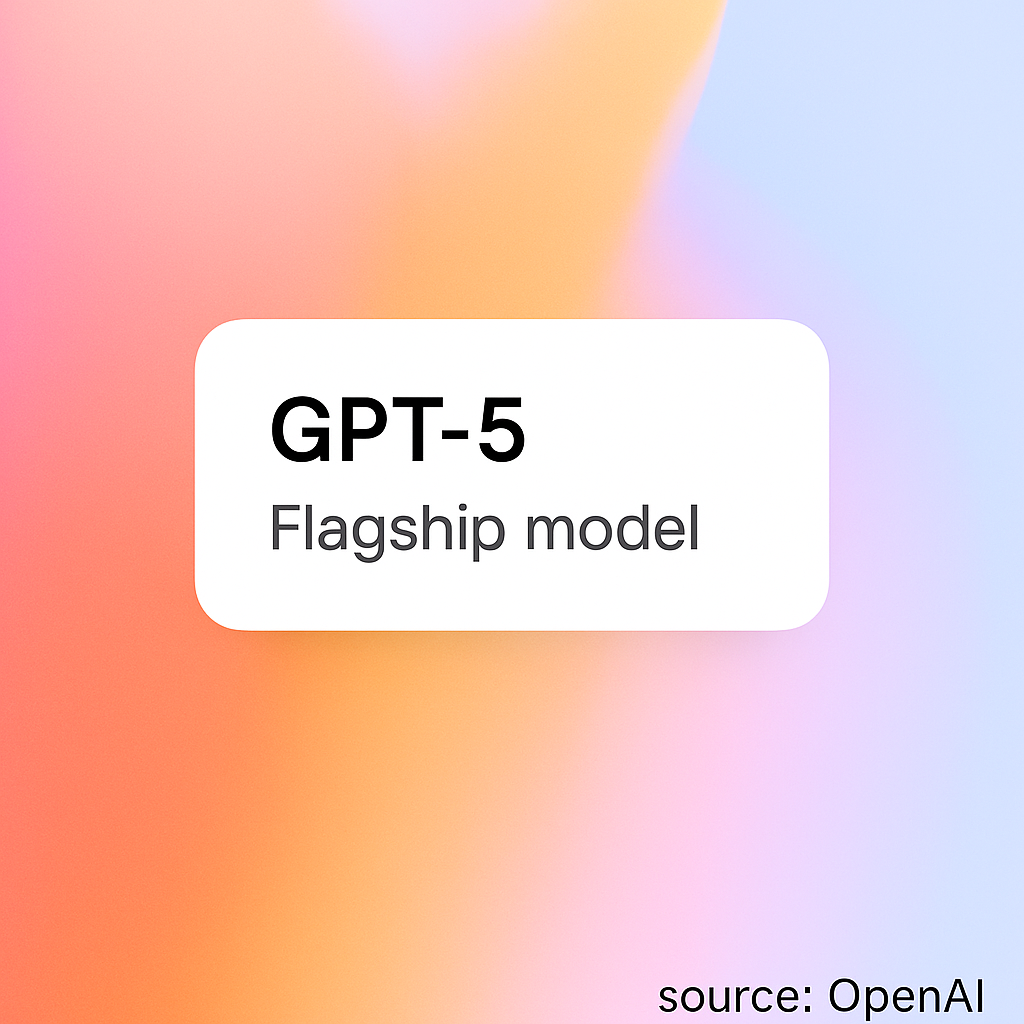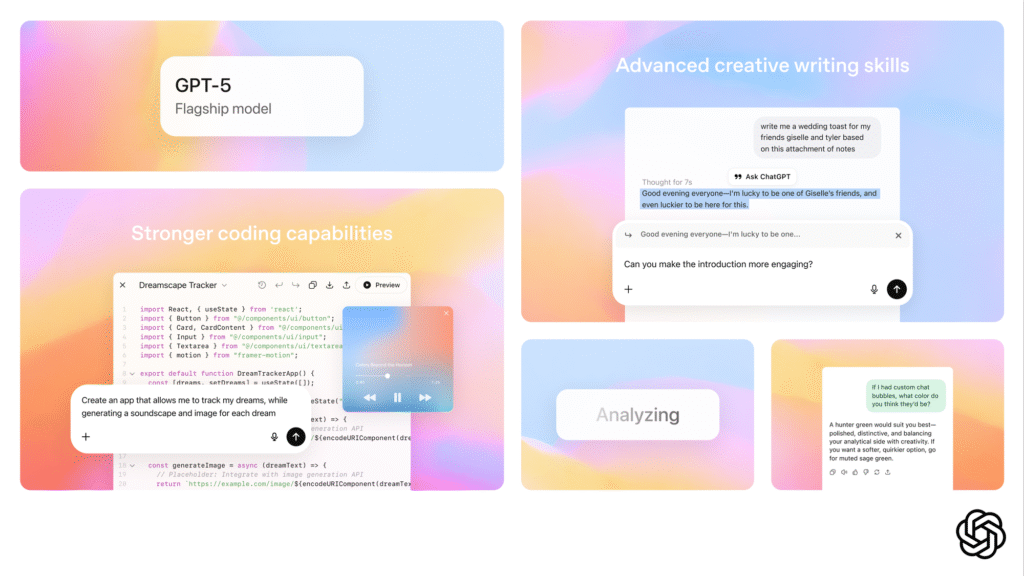
Introduction
On August 7, 2025, OpenAI officially launched GPT-5, a step that many describe as a major milestone on the path toward Artificial General Intelligence (AGI)—though not AGI itself. CEO Sam Altman framed it as “a significant step along the path to AGI,” suggesting the model feels like interacting with a PhD-level expert. Since then, GPT-5 has rolled out to free users, as well as Plus, Pro, Enterprise, and EDU customers via ChatGPT and the API.
What Sets GPT-5 Apart?
Unified, Intelligent System
GPT-5 operates as a unified system – it smartly chooses between quick responses and deeper reasoning, using a real-time router that picks the best path based on conversation complexity, user intent, or even explicit prompts like “think hard”.
Cutting-Edge Performance & Benchmarks
OpenAI developed three model variants – standard, mini, and nano – each offering different trade-offs in cost, speed, and capacity. Key benchmarks reveal GPT-5’s impressive capabilities:
- SWE-bench Verified: 74.9% (versus o3’s ~69%)
- Aider polyglot: 88% top score
- Tool-calling (τ²-bench telecom): 96–97%
- Long-context accuracy (OpenAI-MRCR): ~89–95% at 128k–256k tokens
These results reflect strong leaps in coding, reasoning, and handling large contexts.
Smarter, Safer, More Trustworthy
GPT-5 comes across as more accurate and grounded, with ~80% fewer factual errors than prior models (e.g., o3). It also reduces hallucinations, follows instructions better, and has enhanced steerability and self-awareness.
Developer-Friendly Features
The API introduces new parameters:
- verbosity for controlling response length and detail
- reasoning_effort, including a minimal setting for faster replies
- Support for custom tools, allowing plaintext tool instructions instead of rigid JSON.
Additionally, GPT-5 shows depth in collaboration – it can generate plans, provide progress updates between tool calls, and operate as an agent that scaffolds, debugs, and summarizes complex tasks quickly.
Broad Ecosystem Integration
GPT-5 is being incorporated across multiple platforms:
- GitHub Models: supporting gpt-5, mini, nano, and chat variants.
- GitHub Copilot: public preview rollout in chat features across web, VS Code, and mobile .
- Microsoft Products: integrated into the broader Microsoft ecosystem using Azure-based training infrastructure.
- Apple Products: Apple confirms GPT-5 integration in iOS 26 update

Positive Highlights
- Media outlets like Wired and Reuters praised GPT-5’s expert-like intelligence and improved accuracy in coding, writing, health, and finance.
- Global publications, including El País, noted expanded multimodal support (text, image, audio, video), personalization, integrations (e.g., Gmail, Calendar), and cost-effective pricing.
- Comparison articles highlighted GPT-5’s complexity and nuance as superior in deep tasks, although other models like Gemini 2.5 Flash remain efficient for everyday use.
Road Bumps & Criticismoad Bumps & Criticism
- Some users experienced a “bumpy” rollout, including a confusing router failure (“chart crime”) and temporary performance dips, prompting some to revert to GPT-4o.
- OpenAI initially removed legacy models for most users, causing frustration; they have since promised to restore GPT-4o access for Plus subscribers.
- Critics argue GPT-5 feels more like a refined product than a revolutionary step toward AGI—solid improvements but not transformative.
What This Means for Users & Developers
For everyday users, GPT-5 delivers smarter, faster, and more personalized interactions—making ChatGPT feel more capable and adaptive. Enhanced integrations and multimodal inputs (text, images, voice, etc.) further enrich the user experience.
Developers gain powerful tools for building applications, especially in coding, automation, and agentic workflows. GPT-5’s flexibility in controlling verbosity and reasoning, plus tool chaining and better context handling, make it a strong collaborator.
Enterprises and educational users benefit from higher usage limits, access to GPT-5-pro and GPT-5-thinking (for deep reasoning), and seamless integration with platforms like GitHub, Microsoft 365, and Azure.
Looking ahead, while GPT-5 marks progress toward AGI, real leaps likely await. OpenAI’s launch strategy—shipping early, iterating fast, and emphasizing usability—signals that future iterations may focus sharply on both power and accessibility.
Conclusion
GPT-5 is a milestone in AI: a polished, powerful, and flexible model that extends OpenAI’s toolset across coding, reasoning, and real-world tasks. While not a quantum leap into AGI, it raises the bar for what intelligent assistants can do today. If you’re a developer, student, or business user, GPT-5 offers capabilities worth exploring now—and a hint at even more ambitious AI on the horizon.
